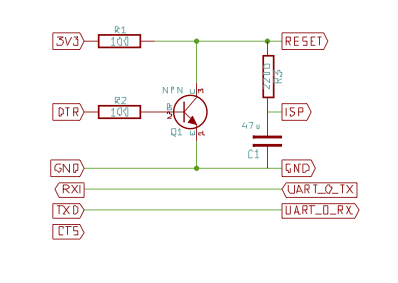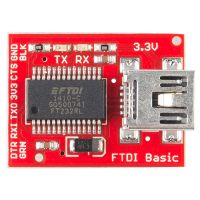« Utilisateur:Cyprien » : différence entre les versions
Aller à la navigation
Aller à la recherche
Aucun résumé des modifications |
Aucun résumé des modifications |
||
| Ligne 4 : | Ligne 4 : | ||
LPC micro-controlers can be programmed using the standard serial line using the ISP mode. This requires to have the <code>ISP</code> pin grounded when the LPC goes out of reset. It's often done using two micro-switches you have to manually press and release in the correct order. | LPC micro-controlers can be programmed using the standard serial line using the ISP mode. This requires to have the <code>ISP</code> pin grounded when the LPC goes out of reset. It's often done using two micro-switches you have to manually press and release in the correct order. | ||
[[Image:FTDIBasic.jpg|200x200px|center]] | |||
How does it work? | |||
* When the <code>DTR</code> signal goes up, the <code>Reset</code> is pulled down, putting the LPC into reset. At this moment C1 starts to discharge through R3, and if <code>DTR</code> is asserted long enough, the <code>ISP</code> pin is put low too. | |||
* When <code>DTR</code> is back to normal, the LPC goes out of <code>Reset</code>, and if C1 is discharged enough enters <code>ISP</code> mode. | |||
Version du 3 septembre 2020 à 01:32
FTDI Basic auto-reset for LPC

LPC micro-controlers can be programmed using the standard serial line using the ISP mode. This requires to have the ISP pin grounded when the LPC goes out of reset. It's often done using two micro-switches you have to manually press and release in the correct order.

How does it work?
- When the
DTRsignal goes up, theResetis pulled down, putting the LPC into reset. At this moment C1 starts to discharge through R3, and ifDTRis asserted long enough, theISPpin is put low too. - When
DTRis back to normal, the LPC goes out ofReset, and if C1 is discharged enough entersISPmode.
